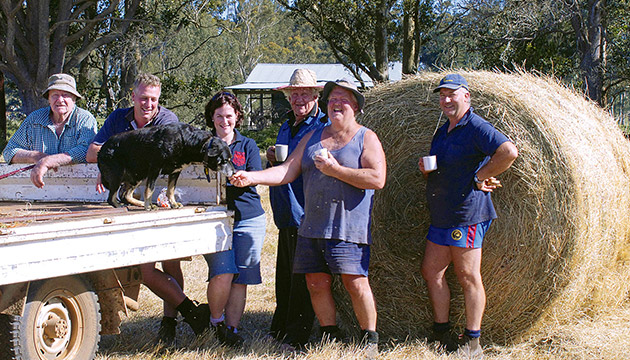Western Australia’s dairying Daubney family has devoted itself to quality over quantity and the gamble is paying off.
Story By Kerry Faulkner
In Western Australia's south-west region is a dynasty of dairy farmers whose newest generation is quietly but firmly taking control and shaking up an industry that has been in decline. The dynasty is the Daubney family on Bannister Downs whose milk is demanded by the fussy baristas along Perth’s bustling St Georges Terrace more than 350 kilometres away.
Servicing 540 buyers throughout the state, not counting Coles and new overseas stockists such as Singapore, is good going for an independent family-run business whose competitors are among the nation’s biggest dairy companies. Matthew Daubney and wife Sue head up the company while their children Johnson, 11, Campbell, 9, and Annalise, 7, are all at primary school in nearby Manjimup (their eldest, Libby, boards in Perth). They’re all dairy farmers in waiting if Matt has his way.
A broad, ruddy-cheeked farmer, Matt is responsible for the cows and the kids. Sue handles the rest; she’s publicist, chief executive and spare-parts finder, a former city girl from the posh western suburbs of Perth who fell in love with a country boy and set about building up the boutique dairy to become the most successful in the state. The task, they say, has demanded bravery, capital investment and absolute madness in equal parts.
In 2005 Matt and Sue were, like most farmers in the area, selling to the major dairy companies. Disillusionment plagued the industry as it does today; Sue estimates that on average one dairy farmer goes out of business every month. “It’s really disturbing when you’re getting up at 3am to milk calves, calving well into the night and you can’t even get a return on your own labour costs,” she says. “We just scratched our heads and asked, ‘Why are we doing this?’ Our average cost of production last year was 43 cents a litre and we’re low-cost production, meaning we have pasture most of the year and we don’t try and get top production out of our cows, so we’re not buying grain.
“The average milk price in July 2012 was 41.5c so if our production cost was around 43c, we would have been better to write out a cheque to the dairy company for $80,000 and go fishing for the year. We had to ask ourselves, ‘What is the point?’ The answer was to take some control of our farm-gate price and the only way we could do that was processing our own milk and getting closer to our consumer so as not to be at the mercy of multinational giants.”
This story excerpt is from Issue #89
Outback Magazine: June/July 2013










